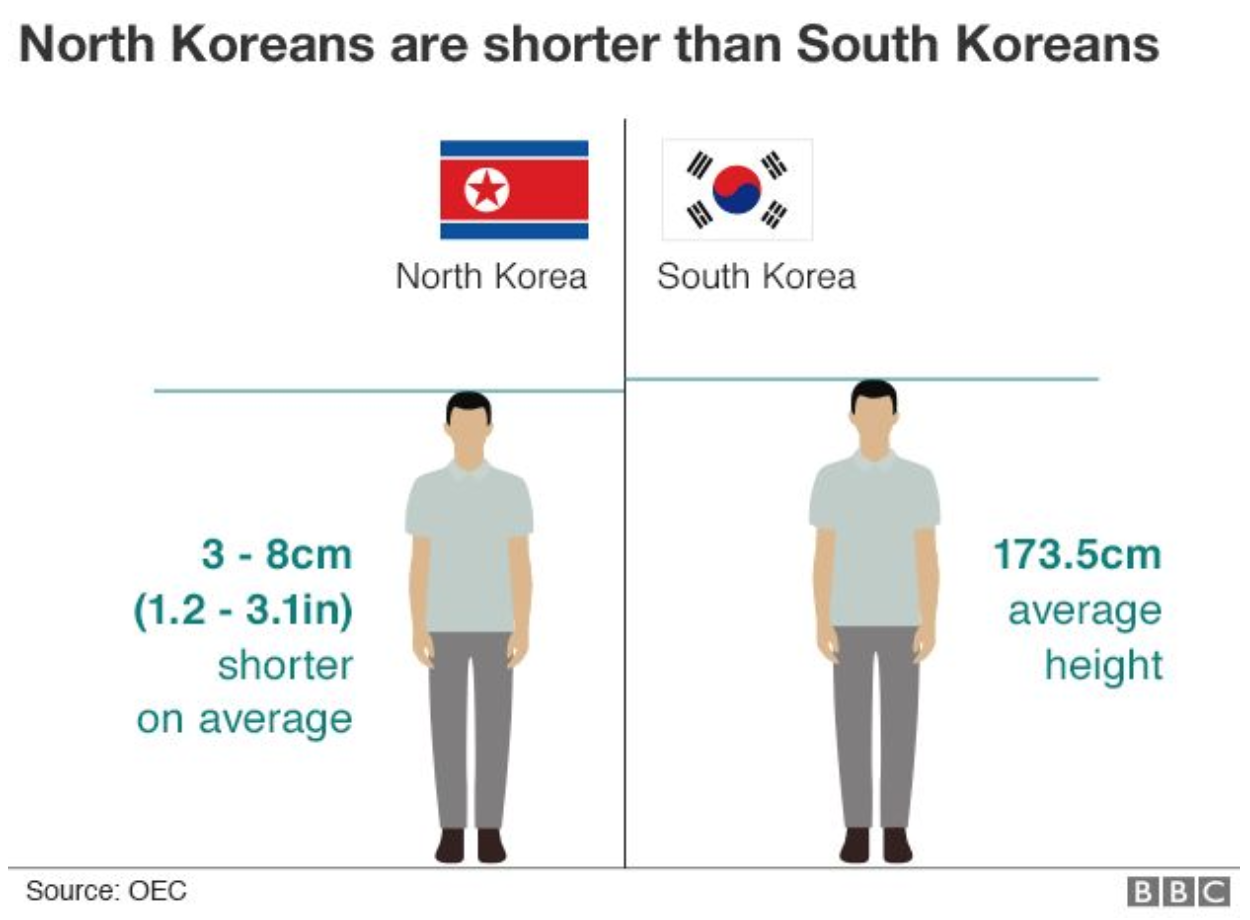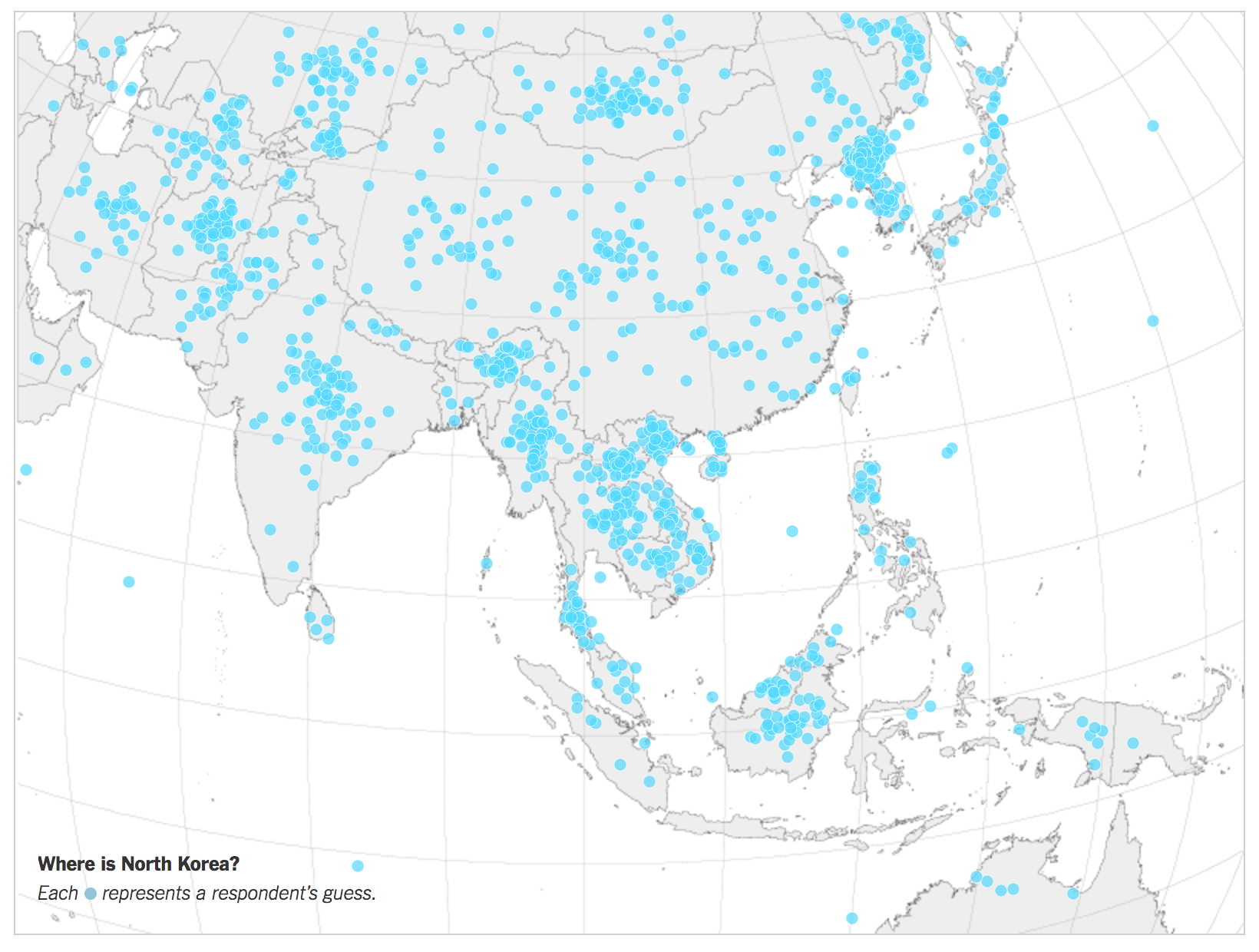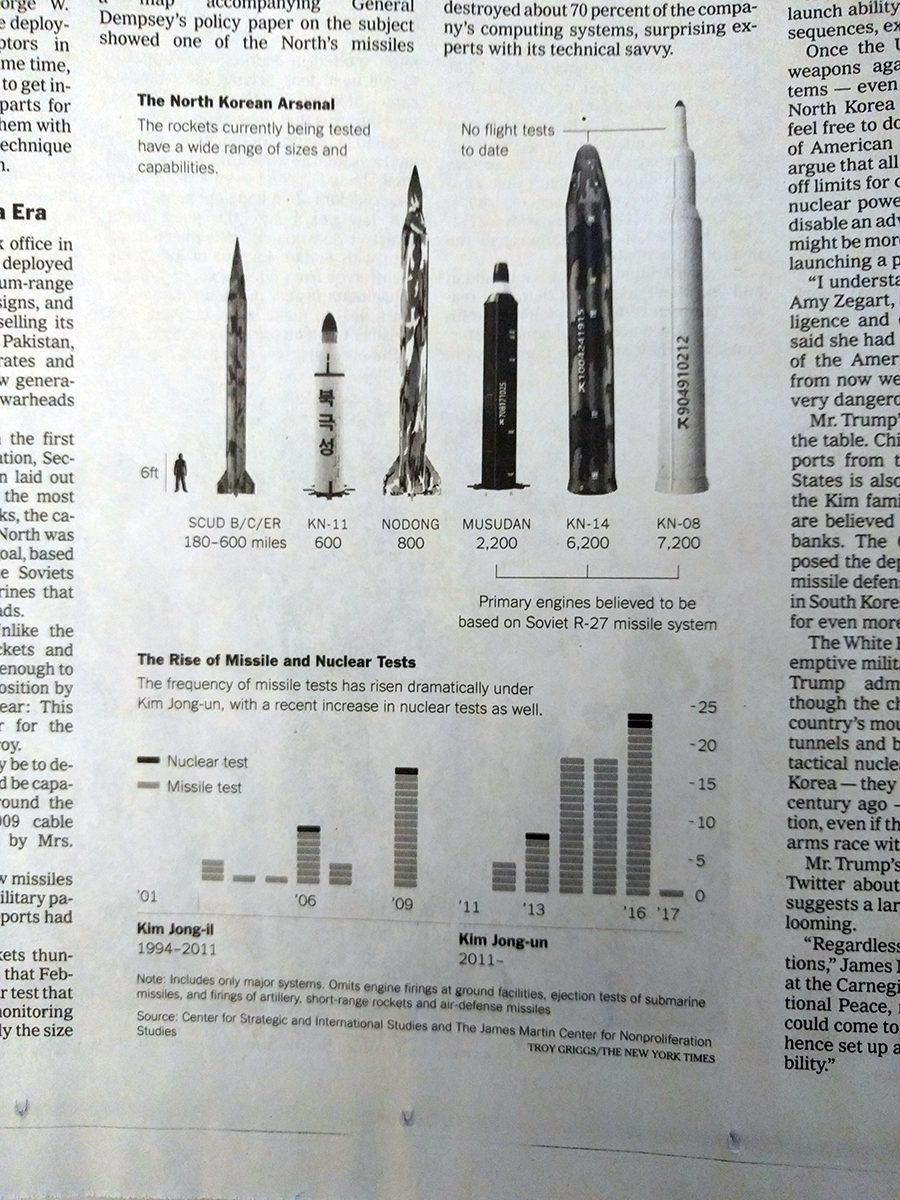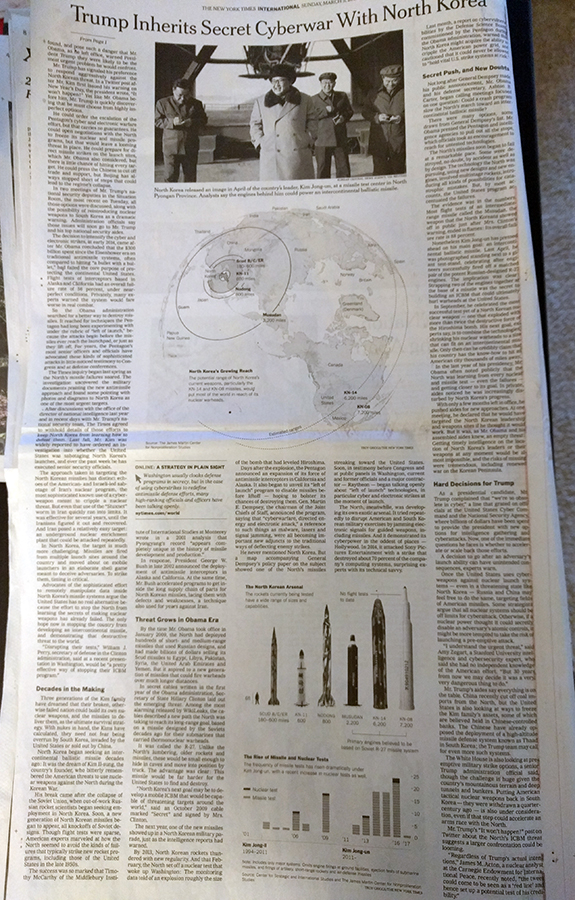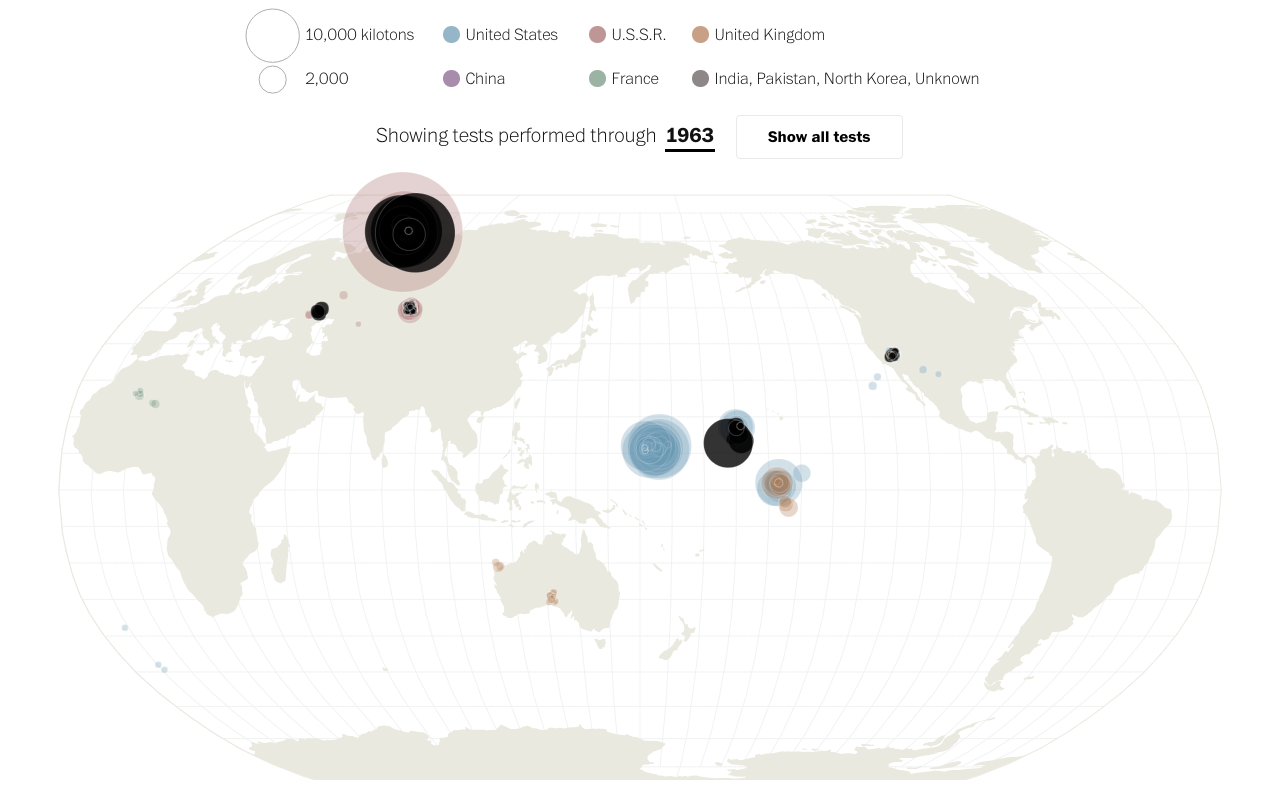Earlier this month the Economist published an article that looked at a different way of measuring the economic output of North Korea. The state is so secretive that the publicly available data we all rely on for almost every country is not available. Nor would we necessarily believe their figures. So we have to rely on other measures to estimate the North Korean economy.
The article is about how luminosity, i.e. the lights on seen from space at night, can be used as a proxy for economic activity in the reclusive state.
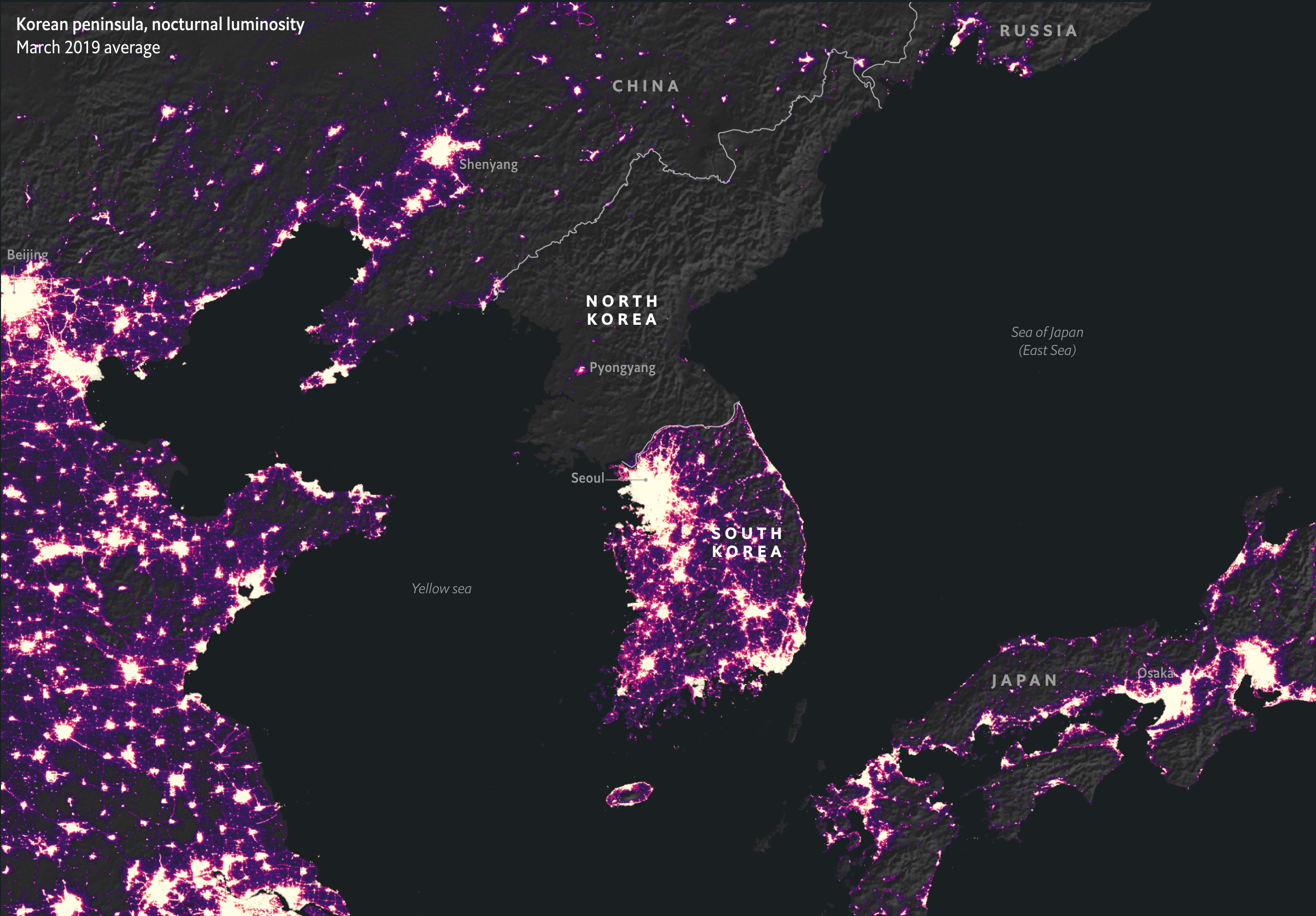
The article is a fascinating read and uses a scatter plot to show the correlation between luminosity and GDP per capita then how that translates to North Korea, comparing it to older models.
Credit for the piece goes to the Economist graphics department.

